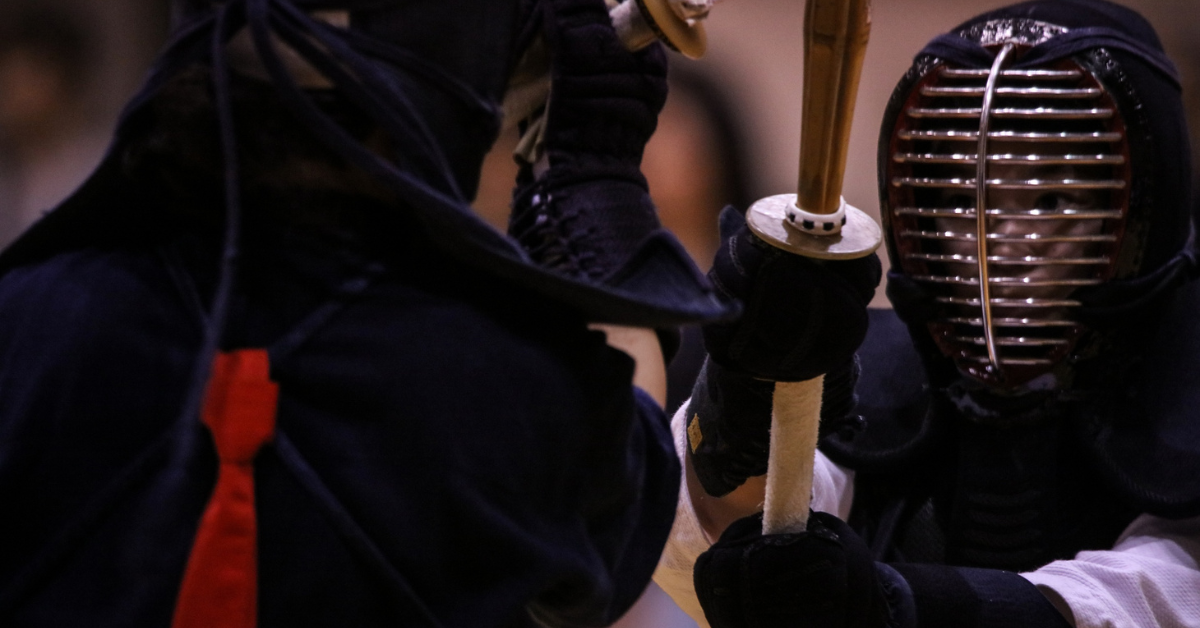Kendo is more than just a martial art. It is a lifelong journey of self-improvement and discipline. The term “Dō” means a way of life that goes beyond winning matches, focusing instead on courtesy, respect, and inner growth. This guide explains the meaning of “Dō” in Kendo in a way that foreign learners can easily understand.
What Is “Dō” in Kendo?
The “Dō” in Kendo means more than just learning how to handle the sword. It refers to a way of life in which one polishes one’s character through practice. In Japanese, “Dō” is close to the English word “Way.” It expresses not just a method but a lifelong spiritual journey.
The official philosophy of Kendo states that it is “the way to discipline the human character through the principles of the sword.” In other words, the true essence of Kendo is personal growth rather than simply winning. Through training, one cultivates courtesy, perseverance, and the spirit of overcoming oneself.
At first, learners focus on swinging the shinai correctly. But over time, they begin to understand the deeper importance of cultivating the mind and improving relationships. The sword is not just a weapon to defeat an opponent but also a mirror that reflects oneself.
Courtesy and Mental Attitude in Kendo
Courtesy, or “Rei,” is the foundation of Kendo. Bowing before and after practice or matches is not only a gesture of respect toward one’s opponent or teacher but also a way to calm and discipline one’s own spirit.
Even in the act of putting on armor or handling the shinai, there are rules of etiquette. These are not just formalities; they serve to engrain attitudes of discipline and mindfulness that can be applied to daily life. For foreign learners, Kendo etiquette becomes a key to understanding Japanese culture.
| Situation of Courtesy | Meaning | Lesson in Kendo |
|---|---|---|
| Bowing before/after practice | Respect for the opponent | Spirit of mutual respect |
| Bowing to the teacher | Gratitude for instruction | Learning humility |
| Bowing to the dojo | Respect for the place | Valuing the training environment |
More Than Winning: The Path of Growth
Winning and losing are important aspects of Kendo, but what matters most is self-growth. In the pursuit of victory, learners develop patience, concentration, and self-control. Even in defeat, there are lessons to be gained, and those lessons lead to growth.
Matches are not the final goal but a process. The opponent is not an enemy but a partner who helps you grow. Without respect for the opponent, true Kendo cannot exist.
| Match Result | What Kendo Values | Lessons Learned |
|---|---|---|
| Victory | Proof of skill | Fruits of sustained effort |
| Defeat | Opportunity for reflection | Chance to overcome weaknesses |
| Draw | Space for improvement | Awareness of growth potential |
Commonalities with Other Japanese “Dō”
In Japanese culture, many disciplines end with “Dō.” Examples include Judo, Sadō (tea ceremony), and Shodō (calligraphy). All of these are paths that go beyond technical skill and emphasize spiritual refinement.
For instance, Judo is guided by the principle of “maximum efficiency and mutual welfare,” aiming to use strength wisely for the benefit of society. Sadō emphasizes “harmony, respect, purity, and tranquility,” fostering peace of mind. Similarly, Kendo’s “Dō” teaches a way of life where the sword becomes a means for cultivating human character.
| Japanese “Dō” | Core Principle | Shared Value |
|---|---|---|
| Kendo | Human development through the sword | Courtesy and spiritual discipline |
| Judo | Maximum efficiency, mutual welfare | Cooperation and social contribution |
| Sadō (Tea) | Harmony, respect, purity, tranquility | Inner peace and balance |
| Shodō (Calligraphy) | Refinement through writing | Focus and self-expression |
The History of Kendo and the Formation of “Dō”
Kendo’s roots lie in Bushidō, the way of the samurai. For the samurai, the sword was a weapon of life and death, requiring strict discipline. Over time, swordsmanship evolved from a battlefield skill into a means of spiritual cultivation, eventually shaping modern Kendo’s concept of “Dō.”
What became most important was Kendo as a means of developing the human character. During the Edo period, samurai emphasized not only sword technique but also courtesy and discipline. This spirit has been inherited in contemporary Kendo practice.
The Value of Kendo’s “Dō” in Modern Society
In today’s fast-paced society, efficiency and results are often emphasized. However, Kendo’s “Dō” teaches the importance of valuing the process over the outcome. Consistent effort, learning from failure, and prioritizing growth over results are lessons that apply not only to martial arts but also to business and personal relationships.
Kendo has spread internationally, with dojos established across the globe. Across different cultures and languages, its shared spiritual values unite people. For foreigners, practicing Kendo is not only a way to experience Japanese culture but also an opportunity to re-examine the values of their own lives.
Points for Foreigners Practicing Kendo
For foreign learners, the first challenge lies in understanding the rules and etiquette. Once they are embraced, however, Kendo becomes more than a sport—it becomes a transformative experience.
| What to Learn | Key Point | Benefits |
|---|---|---|
| Etiquette | Strictly follow bows before and after practice | Cultivates respect for others |
| Technique | Repetition of basic swings | Builds stamina and concentration |
| Spirit | Emphasis on patience and self-control | Strength to face adversity |
Conclusion
The “Dō” in Kendo is not merely about swordsmanship but about a lifelong journey of human development. For foreign practitioners, Kendo is a gateway to Japanese culture and an opportunity to experience the values of courtesy, respect, and mental discipline. The lessons of Kendo extend beyond the dojo, enriching everyday life and shaping one’s character in profound ways.






